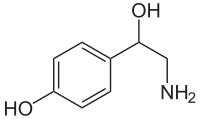
Photo from wikipedia
Insect glutathione S-transferases (GSTs) play important roles in insecticide/drug resistance and stress response. Medically, GSTs of house dust mites (Dermatophagoides pteronyssinus and Blomia tropicalis) and German cockroach (Blattella germanica) are… Click to show full abstract
Insect glutathione S-transferases (GSTs) play important roles in insecticide/drug resistance and stress response. Medically, GSTs of house dust mites (Dermatophagoides pteronyssinus and Blomia tropicalis) and German cockroach (Blattella germanica) are human allergens. In this study, classes, isoforms and B-cell and allergenic epitopes of GST of American cockroach, Periplaneta americana, the predominant species in the tropics and subtropics were investigated for the first time. Enzymatically active native and recombinant P. americana-GSTs bound to IgE in sera of all P. americana allergic patients that were tested. By gel-based proteomics and multiple sequence alignments, the native GST comprises three isoforms of delta and sigma classes. All isoforms interacted with serum IgE of the cockroach allergic subjects. Molecularly, the protein contains six B-cell epitopes; two epitopes located at β1-α1 and β4-α3 regions bound to patients’ serum IgE, indicating that they are allergenic. P. americana are ubiquitous and their GST can sensitize humans to allergic diseases; thus, the protein should be included in the allergen array for component resolved diagnosis (CRD) of allergic patients, either by skin prick test or specific IgE determination. The GST is suitable also as a target of environmental allergen detection and quantification for intervention of cockroach sensitization and allergic morbidity.
Journal Title: Scientific Reports
Year Published: 2017
Link to full text (if available)
Share on Social Media: Sign Up to like & get
recommendations!